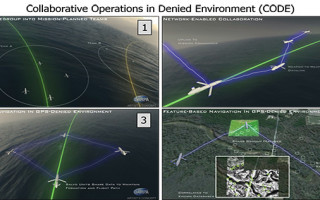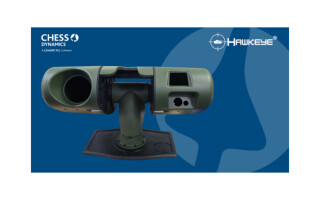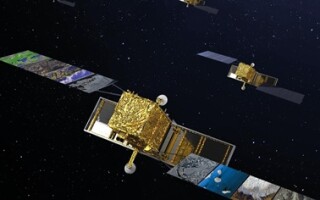DARPA's CODE program for unmanned systems moves to Phase 2
NewsJune 06, 2016

ARLINGTON, Va. Defense Advanced Research Projects Agency (DARPA) officials selected Lockheed Martin and Raytheon to move to Phase 2 in the Collaborative Operations in Denied Environment (CODE) program, which aims to develop and demonstrate the value of collaborative autonomy. Six additional companies will collaborate with the two prime contractors in support of CODE to make further advancements in the program.
“During Phase 1, we successfully demonstrated, in simulation, the potential value of collaborative autonomy among UASs at the tactical edge, and worked with our performers to draft transition plans for possible future operational systems,” says Jean-Charles Ledé, DARPA program manager. “Between the two teams, we have selected about 20 autonomous behaviors that would greatly increase the mission capabilities of our legacy UASs and enable them to perform complex missions in denied or contested environments in which communications, navigation, and other critical elements of the targeting chain are compromised. We have also made excellent progress in the human-system interface and open-architecture framework.”
Phase II of the program will enable engineers to implement an initial subset of behaviors within each of the two open architectures and use those architectures to conduct live flight tests with one or two live UASs augmented with several virtual aircraft. Once completed, DARPA has the option to move to Phase 3, in which one team would test the capabilities using up to six live vehicles cooperating among themselves and with additional simulated vehicles.
Engineers of the program are working to deliver a software system that is resilient to bandwidth limitations and communications disruptions by helping U.S. military unmanned aircraft systems (UASs) conduct engagements of mobile ground and maritime targets in denied or contested electromagnetic airspace, and at the same time reducing required communication bandwidth and cognitive burden on human supervisors.
UASs equipped with CODE would be able to perform missions by negotiating assignments, sharing data, and synchronizing actions and communications among team members and with the commander. Its modular open software architecture on board the UASs would enable multiple CODE-equipped UASs to navigate to their destinations and find, track, identify, and engage targets under established rules of engagement.
Engineers designed CODE’s human-system interface (HSI) to allow one person to visualize, supervise, and command a team of unmanned platforms in an intuitive manner, where the commander knows details of the mission in real-time. This capability simplifies the command and control of large groups of UASs.
Standards such as the Future Airborne Capability Environment (FACE) and Unmanned Control Segment (UCS) used by the U.S. Army and U.S. Navy, and the Open Mission Systems (OMS) and Common Mission Command and Control (CMCC) used by U.S. Air Force are helping to develop the HSI and autonomy algorithms.
The companies that will collaborate in the CODE program:
- Daniel H. Wagner Associates in Hampton, Virginia
- Scientific Systems Company, Inc. in Woburn, Massachusetts
- Smart Information Flow Technologies, LLC in Minneapolis, Minnesota
- Soar Technology, Inc. in Ann Arbor, Michigan
- SRI International in Menlo Park, California
- Vencore Labs dba Applied Communication Sciences in Basking Ridge, New Jersey
Demonstration of CODE Phase 1 human- system interface:
[youtube=https://www.youtube.com/watch?v=o8AFuiO6ZSs;w=529&h=472]
Read more on unmanned systems:
More payload interoperability key for UAS platforms
Sensor processing, commercial drone applications, COTS use hot at Xponential unmanned systems show
Team to develop solutions for U.S. Army's Common Robotic System - Individual program







